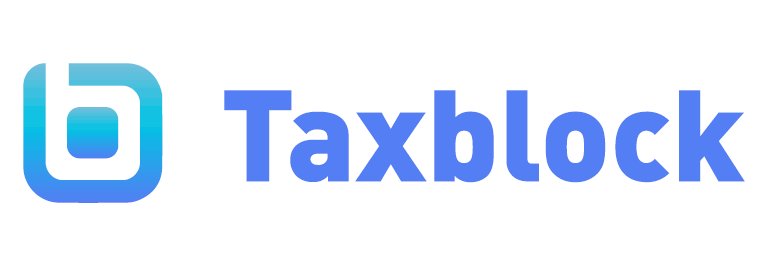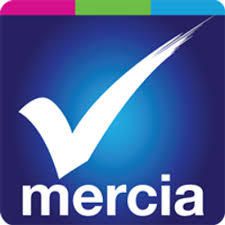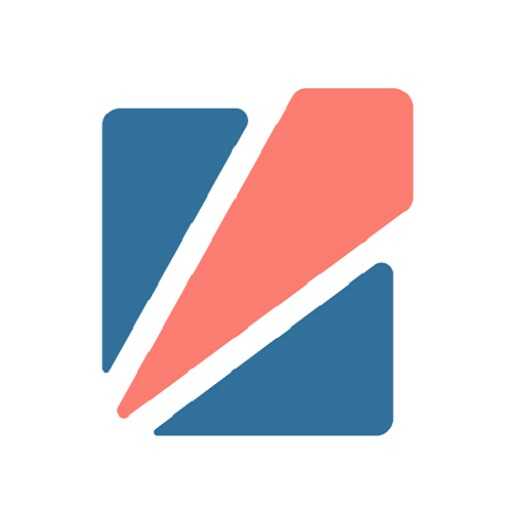Description

CompuTax

Reach-Tax
Comprehensive Overview: CompuTax vs Reach-Tax
CompuTax and Reach-Tax are both software solutions designed to streamline tax-related processes for individuals and businesses. Below is a comprehensive overview focusing on their functions, target markets, market share, user base, and differentiating factors.
a) Primary Functions and Target Markets
CompuTax:
-
Primary Functions: CompuTax is primarily designed for tax computation and filing. It provides solutions for income tax return filing, GST compliance, TDS (Tax Deducted at Source) management, and financial reporting. The software automates various tax-related calculations, generates necessary forms, and provides updates on compliance regulations.
-
Target Markets: The primary users of CompuTax include tax professionals, accounting firms, and small to medium-sized enterprises (SMEs) that require comprehensive tax management solutions. It is particularly popular in regions with complex tax systems and compliance norms like India.
Reach-Tax:
-
Primary Functions: Reach-Tax software focuses on the automation of tax preparation and filing processes, offering features such as e-filing, tax planning, audit support, and client management. It caters to end-to-end tax solutions, making it easier for users to manage their tax obligations seamlessly.
-
Target Markets: Reach-Tax targets primarily small businesses, individual practitioners, and consultants who need robust tax handling capabilities. It is known for its user-friendly interface, which makes it accessible to non-professionals as well.
b) Market Share and User Base
-
CompuTax:
- CompuTax enjoys a substantial share in markets where the tax structures are rigorous and require specialized handling, such as in India. Its user base is sizeable within the tax professional community due to its comprehensive features that are tailored to complex tax systems.
-
Reach-Tax:
- Reach-Tax is gaining traction in the SME sector and among entrepreneurs who prefer a more straightforward, easy-to-use solution. While its overall market share may be smaller compared to CompuTax, its growth is notable in areas where simple compliance solutions are needed.
c) Key Differentiating Factors
-
Complexity and Specialization:
- CompuTax is better suited for environments with intricate tax requirements, offering specialized tools for handling various tax aspects which might be essential for large enterprises or specialized firms.
- Reach-Tax is streamlined for simplicity, making it attractive for smaller businesses and individual users who require straightforward tax tracking and filing.
-
User Experience:
- CompuTax may have a steeper learning curve due to its comprehensive and detailed feature set, requiring some background in tax handling to maximize its benefits.
- Reach-Tax offers a more intuitive user interface designed for ease of use, catering to users who may not be tax experts but need an efficient way to manage their taxes.
-
Feature Set:
- CompuTax has a broader range of features aimed at professional tax preparers, including extensive report generation and advanced compliance tools.
- Reach-Tax focuses on automation and simplification, providing essential features that cater to the core needs of filing and compliance without overwhelming the user with advanced options.
In summary, CompuTax is positioned as a more powerful tool for tax professionals and companies dealing with complex tax structures, while Reach-Tax offers a simpler, more user-friendly experience suited for small businesses and independent practitioners. Each has its niche, and the choice between them would depend on the specific needs and expertise of the user.
Contact Info

Year founded :
Not Available
+1 702-432-0808
Not Available
United States
Not Available

Year founded :
Not Available
Not Available
Not Available
Not Available
Not Available
Feature Similarity Breakdown: CompuTax, Reach-Tax
To provide a feature similarity breakdown for CompuTax and Reach-Tax, let's explore each aspect you’ve listed:
a) Core Features in Common
-
Tax Calculation and Filing: Both CompuTax and Reach-Tax provide tools for calculating tax liabilities accurately and allow users to file taxes electronically in compliance with regulatory standards.
-
Multi-User Access: They typically offer multi-user access, enabling accountants and tax professionals to collaborate on tax preparation tasks.
-
Compliance Updates: Each software keeps users updated on the latest tax laws and regulations to ensure compliance.
-
Data Import/Export Capabilities: Both allow users to import financial data from various accounting software and export reports and filings.
-
Reporting and Analytics: Comprehensive reporting features to analyze tax data and produce necessary documentation are available in both.
-
Security Features: Industry-standard data encryption and user authentication are expected to ensure data security and privacy.
-
Customer Support: Each provides customer support services to assist with any technical or use-case issues.
b) User Interface Comparison
- CompuTax:
- Known for a more traditional, possibly complex interface that provides robust tools for tax professionals familiar with in-depth accounting software.
- Typically presents information in a tabular or data-entry form, favored by users who prefer structured layouts.
- Reach-Tax:
- Offers a more modern and intuitive user interface with simplified navigation, which may appeal to newer users or smaller businesses looking for ease-of-use.
- Focuses on reducing the clutter and presenting information in a more visual format, possibly using dashboards with graphical insights.
c) Unique Features
-
CompuTax:
- Advanced Customization: Offers highly customizable solutions tailored to specific business needs, suitable for larger firms with complex tax obligations.
- Integration with Legacy Systems: Provides integration capabilities with older systems, which can be critical for established firms using legacy technologies.
-
Reach-Tax:
- AI-Powered Assistance: Features AI-driven tools that assist with data entry and error-checking, designed to save time and reduce human error.
- Mobile Accessibility: Prioritizes mobile access and functionality, enabling users to perform essential tasks via a mobile app, which is ideal for on-the-go professionals.
Conclusion
While CompuTax and Reach-Tax share many fundamental features essential for tax preparation and filing, their differences mainly lie in their user interface design and unique offerings. CompuTax might appeal more to larger firms needing deep customization and seamless integration with legacy systems, whereas Reach-Tax could be preferred by smaller businesses or users seeking a modern, mobile-friendly user experience with AI-enhanced capabilities.
Features

Streamlined Tax Filing
Efficient Organization
Customer Support
Compliance and Accuracy

Tax Compliance Simplified
Customizable Tax Solutions
Secure Data Management
Automated Tax Calculations
User-Friendly Interface
Best Fit Use Cases: CompuTax, Reach-Tax
To evaluate the best fit use cases for CompuTax and Reach-Tax, it's important to consider their specific features and strengths tailored to different business needs and scenarios. While I'm not familiar with these exact products, we can analyze them using typical categories for tax software solutions.
CompuTax
a) For what types of businesses or projects is CompuTax the best choice?
-
Large Enterprises and Corporations:
- Complex Tax Structures: CompuTax might be ideal for large businesses that deal with complex, multi-state, or international tax structures requiring detailed compliance and reporting features.
- Custom Integrations: If the software supports extensive customization and integrations with existing enterprise resource planning (ERP) systems, it would be beneficial for corporations needing tailored solutions.
-
Tax Advisory Firms:
- Comprehensive Tax Services: Large accounting and tax advisory firms could leverage CompuTax for managing extensive client portfolios, providing detailed tax planning, and optimizing tax strategies for various industries.
-
Projects Requiring Advanced Analytics:
- Data-Driven Decisions: If the product offers robust analytics and forecasting capabilities, it would be ideal for projects aiming to utilize data insights for strategic tax planning.
Reach-Tax
b) In what scenarios would Reach-Tax be the preferred option?
-
Small to Medium-Sized Enterprises (SMEs):
- Ease of Use: If Reach-Tax provides a user-friendly interface and simplified processes, it would be suitable for SMEs that might not have in-house tax experts.
- Cost-Effective: Typically, such solutions are priced lower, making them attractive for smaller businesses with budget constraints.
-
Startups and Freelancers:
- Scalability: Startups or freelancers might prefer Reach-Tax if it's scalable and flexible, supporting them as they grow without overwhelming initial complexity.
-
Industries with Specific Compliance Needs:
- Vertical-Specific Features: If Reach-Tax caters specifically to certain industry verticals, such as retail, healthcare, or tech, by addressing unique tax compliance and reporting needs, it can be a preferred solution for businesses in those sectors.
d) How do these products cater to different industry verticals or company sizes?
-
Industry Verticals:
- CompuTax might cater to highly regulated industries like finance, pharmaceuticals, or energy, where compliance is complex, and reporting accuracy is crucial.
- Reach-Tax could focus on industries with simpler compliance needs or provide tailored solutions for niche markets like e-commerce or creative industries.
-
Company Sizes:
- Large Enterprises: They might prefer CompuTax for its ability to handle complex tax scenarios and offer in-depth customer support, automation, and customization.
- SMEs and Startups: Such businesses might find Reach-Tax more aligned with their needs, thanks to its ease of use, cost-effectiveness, and sufficient feature set to cover basic to intermediate tax tasks.
By considering these factors, businesses can choose the most suitable tax software product based on their size, industry, and specific tax compliance requirements. Always ensure that you evaluate any tax software product based on current features and user reviews, as capabilities can evolve over time.
Pricing

Pricing Not Available

Pricing Not Available
Metrics History
Metrics History
Comparing undefined across companies
Conclusion & Final Verdict: CompuTax vs Reach-Tax
When comparing CompuTax and Reach-Tax, it's important to evaluate them based on key factors like cost, user-friendliness, features, customer support, and overall effectiveness in meeting user needs. Here's a detailed conclusion and final verdict:
a) Best Overall Value
Reach-Tax offers the best overall value for most users due to its comprehensive feature set, ease of use, and responsive customer support. It provides a seamless filing experience that caters to both individual users and businesses. Additionally, its pricing structure is competitive, especially given the variety of features included.
b) Pros and Cons
CompuTax:
-
Pros:
- Accuracy and Robustness: Known for its precise calculations and handling of complex tax situations, making it ideal for users with intricate tax needs.
- Professional Features: Offers advanced features suitable for tax professionals and larger businesses, such as bulk filing options and specialized compliance tools.
-
Cons:
- Learning Curve: Can be more challenging to navigate for beginners or those without a tax background, potentially requiring more time to understand.
- Higher Cost: Pricing can be steeper compared to Reach-Tax, particularly when considering premium features and support options.
Reach-Tax:
-
Pros:
- User-Friendly Interface: Highly intuitive, making it accessible for individuals and businesses without extensive tax knowledge.
- Excellent Support: Provides robust customer support, ensuring that users can get assistance when needed.
- Value for Money: Offers a great balance of features and cost, making it an attractive option for a wide range of users.
-
Cons:
- Limited Advanced Features: May not have some of the advanced functionalities and customization options required by large enterprises or specialized tax professionals.
- Scalability Concerns: While ideal for small to medium enterprises, it might not scale as effectively for rapidly growing businesses with complex tax requirements.
c) Recommendations for Users
-
For Beginners and Small to Mid-sized Businesses:
- Consider Reach-Tax due to its simplicity, supportive resources, and cost-effectiveness. It will most likely meet the needs of this group with minimal hassle.
-
For Tax Professionals and Large Enterprises:
- CompuTax may be the more suitable option given its depth of features and ability to handle complex scenarios. This will benefit users who need advanced tools and are comfortable with a steeper learning curve.
-
Customization and Specific Needs:
- Evaluate specific features of each software that align with your personal or business tax requirements. For instance, if multi-state filings or niche compliance are key, assess which product best supports these functions effectively.
In summary, your choice between CompuTax and Reach-Tax should be guided by factors such as your level of comfort with tax preparation software, the complexity of your tax situation, and the scale of your operations. Each product has its distinct strengths, so the best choice will depend heavily on individual needs and preferences.
Add to compare
Add similar companies



